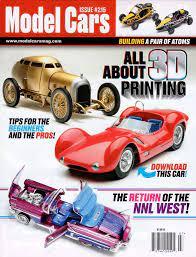-
Posts
39,262 -
Joined
-
Last visited
Content Type
Profiles
Forums
Events
Gallery
Everything posted by Ace-Garageguy
-
Those who can't cook. Oh, the humanity.
-
Home improvement can be much more expensive for the cack-handed and unskilled who attempt DIY and have to call in professionals anyway, to fix their screwups.
-
-
-
-
"Simpsons" might cease to exist in the context of "sons of simps", as simps are not generally known to be prolific breeders.
-
-
"Elephant in the room" is a descriptive slang phrase that's loosely but distantly related to "800 pound gorilla", though its meaning is entirely and completely different (while "800 pound gorilla in the room" has been used occasionally, the phrase tends to blur the differences in accepted correct usage of the original phrases), and has nothing whatsoever to do with "camel's nose in the tent"...but all these incursions of fauna should be treated with concern by lexicographers, pedants, and government and corporate officers equally; perhaps of purely scholastic interest, the phrase "piranha in the bathtub" (sometimes "piranha in the pool") has never really grown the legs to become part of the vernacular, but being a fish, that's not particularly surprising from a zoological standpoint.
-
The folks working towards fully autonomous vehicles have realized it's a lot harder than they thought it was going to be, and it's taking a lot longer to get it right. Even a stupid, dozy human has abilities that machines haven't mastered yet...which is not to say stupid, dozy humans use these abilities...but to be a superior driver, a machine HAS to.
-
The whole plug wire thing appears to be very much in the eye of the beholder, and I'm of the opinion that builders who spend a lot of time under the hoods of real cars are going to be the most critical, with regularly calibrated eyeballs. To my eye, pretty much scale-correct .011"-.012" looks best for older stock plug wires, and .015"-.016" looks best for late-model or high-performance wires. I think most average folks aren't going to notice a few thousandths of an inch, but it jumps out at me like a wart on the Mona Lisa's nose. The really fat wires some seem to be satisfied with look like garden hose to me. Sorry, but that's how I see it. Funny thing is that I was completely satisfied with sewing thread for plug wires when I was much younger, and I'm sure a lot of other geezers were as well. And it looked like puke.
-
"Flake" is what we used to call people who had no real solid understanding of objective reality, but now they seem to be the dominant influence in the ruling class.
-
-
-
"Made in China" stamped on any manufactured item is your assurance of the absolutely highest quality possible in the known universe.
-
Interesting related aside...Bill Cunningham's spectacular 1/24 "birdcage" Maserati is flawless blown up on a computer screen (I'm sure he knows where the imperfections are, but no mere mortal will ever spot one), but on a contest table it will simply blow you away.
-
Why did the chicken cross the road? He didn't. He just sat and complained that it was way too hard.
-
It's OK. Mommy or Uber or an autonomous transport pod will always get you there with no icky "effort" from you.
-
Yup. If something looks pretty good blown up to several times its size on a computer screen, you can be confident it'll look great on a shelf or contest table.
-
As the meanings of words continue to become more arbitrary...
-
-
When this is the guy driving the bus, you might want to rethink your destination...
-
-
Excellent. As a builder who posts detailed descriptions to accompany photos of my WIPs, I occasionally get questions about aspects that are fully covered in the text. And sometimes I've been tempted to be kinda rude when it's obvious someone just didn't bother to read the text. But as you say, there have been times I've overlooked something clearly printed right in front of me, so I tend to try to be a little nicer these days, having accepted (somewhat reluctantly ) that I'm not always perfect in my perception either.
-

1966 Mercury M-250 4x4
Ace-Garageguy replied to Mercuryman54's topic in Model Trucks: Pickups, Vans, SUVs, Light Commercial
Capital NICE. Really glad I bought one these kits after seeing yours. -
Thanks, guys. They look a little better than I thought they would, actually, and when you consider they look pretty good blown up to over 3 times their actual size on my computer screen, I'm sure they'll look fine on a 1/24 scale curbside model (and this is one big reason I'll really miss Testors buffing metalizer).





